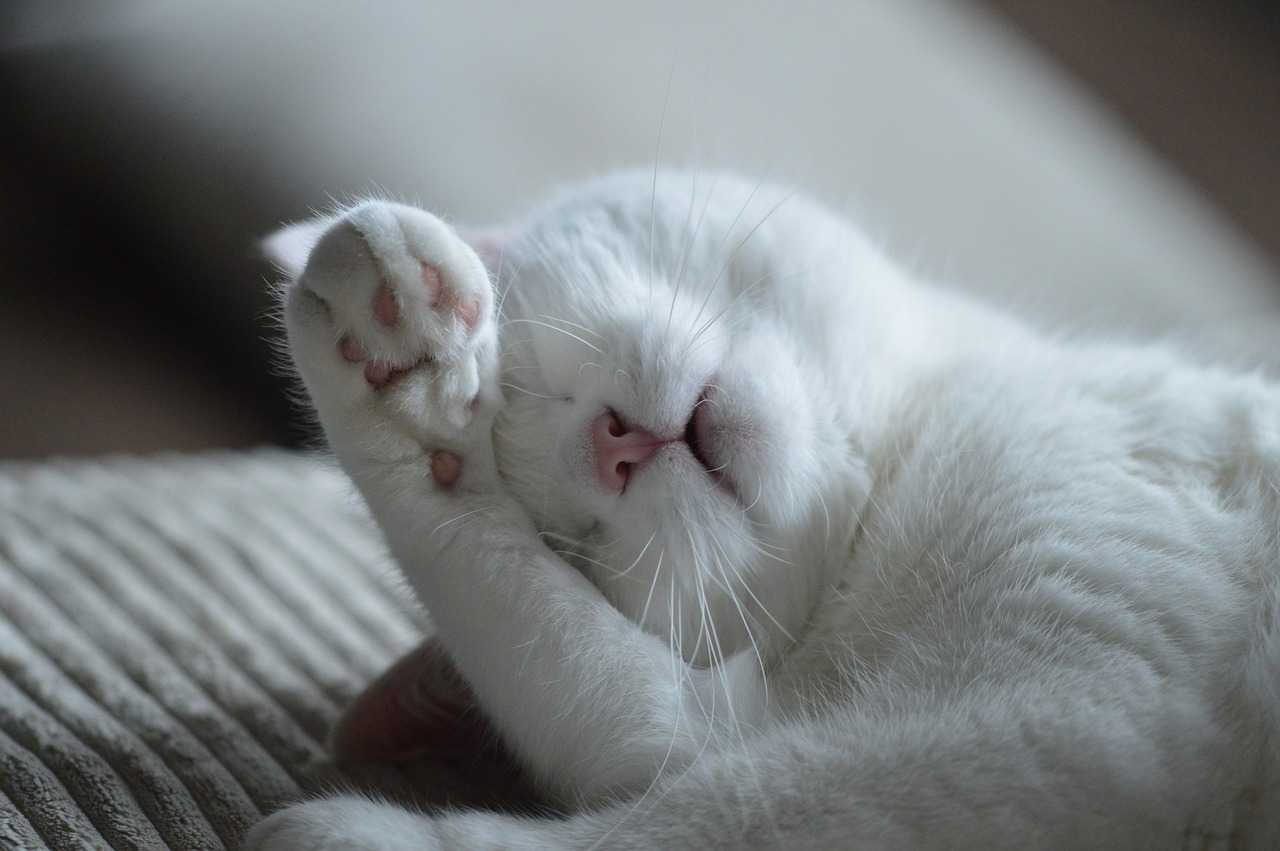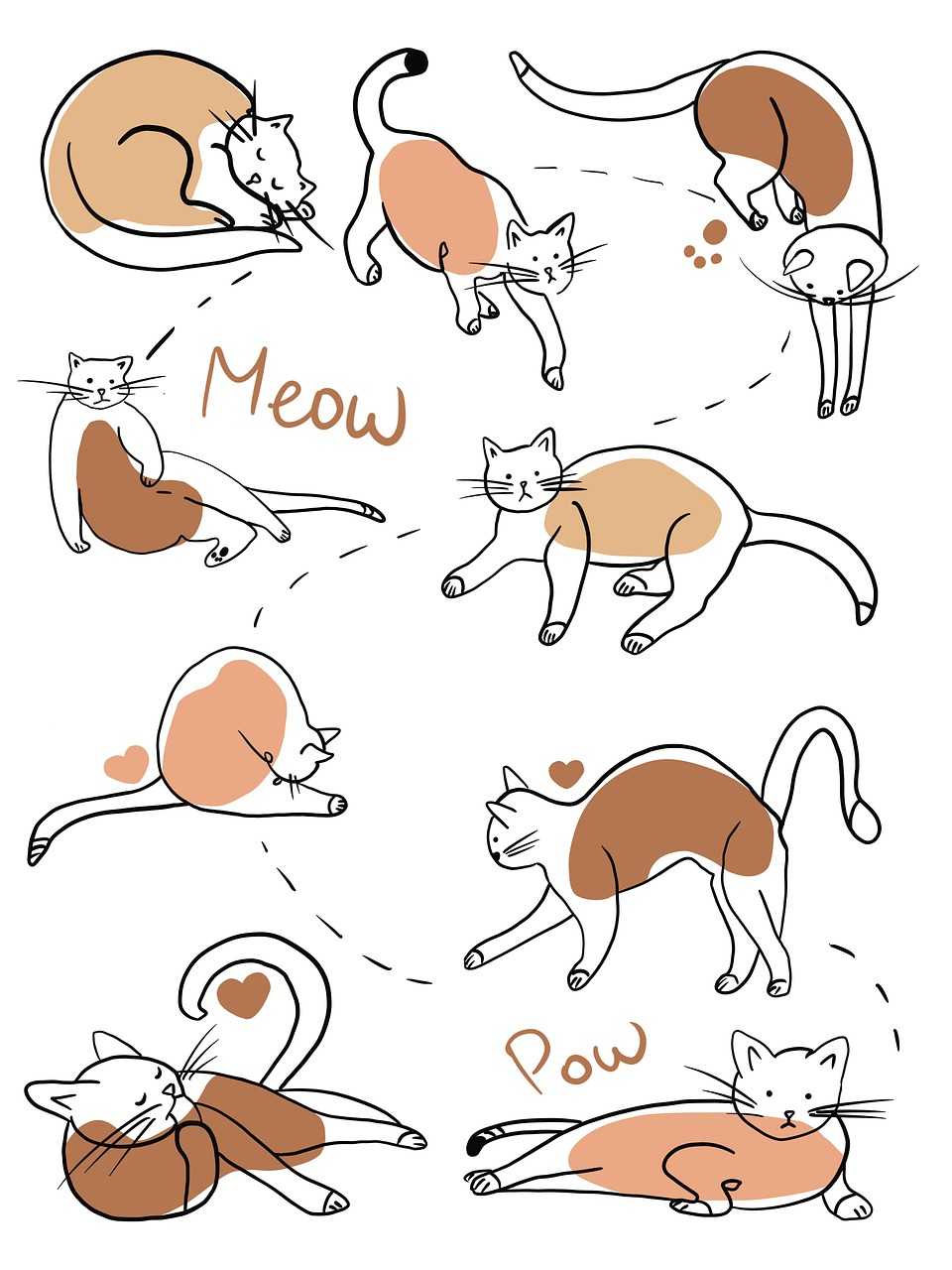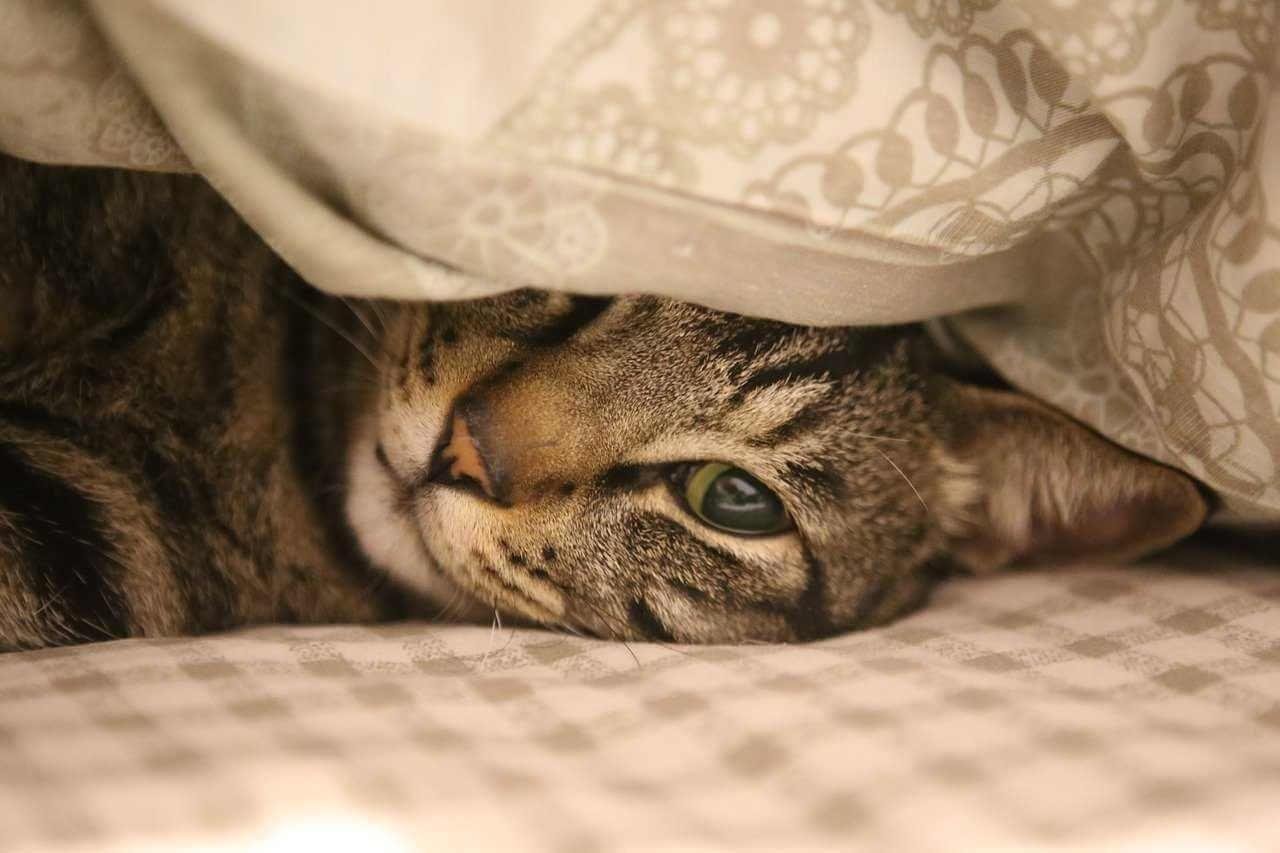Have you ever noticed your feline friend displaying odd or repetitive behaviours and wondered if cats have autism? It’s a question that’s piqued the curiosity of many cat owners and animal behaviourists alike. While autism is a human-specific condition, the concept of a spectrum of behaviours in cats has gained attention.

Understanding your cat’s quirks is essential to providing them with a happy and healthy life. Let’s delve into the intriguing world of feline behaviour and explore whether our furry companions can indeed have autistic-like behaviours. You’ll discover the science behind their unique personalities and what these behaviours might mean for your cat’s well-being.
The Autism Spectrum in Cats
When you delve into the idiosyncrasies of feline behaviour, you might find traits that seem to mirror the human autism spectrum. Though the term autism is strictly associated with humans, some cats exhibit behaviours that puzzle their owners and experts alike. It’s essential to consider the complex nature of cats’ sensory experiences and social interactions in this discussion.
Cats are known for their sensitivity to sensory input, much like individuals with autism. They can be unusually particular about their environments and routines. An unexpected change can disrupt their sense of security, leading to what might be perceived as autistic-like responses. This can include repetitive behaviours, lack of social interaction, or extreme focus on specific objects.

Research has yet to establish an equivalent spectrum of conditions in cats. However, when you observe your cat exhibiting a particular set of behaviours, understanding them in the context of a spectrum can be helpful. Here are some traits you may notice:
- Unusual reactions to sensory stimuli such as sounds or textures
- Repetitive movements such as tail-chasing or pacing
- Difficulty adapting to changes in routine or environment
- Selective social interactions, preferring animals or humans selectively or avoiding socialising altogether
It’s worth noting that many of these behaviours could be a sign of underlying medical conditions or stress rather than a behavioural spectrum. If your cat’s behaviour changes suddenly or if they display extreme forms of the above behaviours, seeking advice from a vet is crucial. The vet can rule out medical causes and help you understand if your cat’s behaviour is within the norm for their species or if it’s something that may need special attention.
By recognising these traits, you’re better equipped to create a supportive home environment for your pet. Tailoring your interactions and your home to suit your cat’s needs can lead to a more harmonious relationship between you and your furry companion.
Can cats have autism-like behaviours?
Understanding Autism in Animals
Autism, as you’re likely aware, is a neurodevelopmental disorder that affects social interaction, communication, and behaviour in humans. Defining it in animals, however, is a complex issue as diagnostic criteria are human-specific. There’s currently no recognised clinical diagnosis for autism in animals, yet some scientists have noticed behavioural patterns that echo autistic traits. You’re looking at a subject that’s fairly uncharted but increasingly intriguing to both pet owners and researchers.
When discussing autism in animals, it’s vital to note that behavioural disorders aren’t the same as developmental ones. Animals can exhibit atypical behaviour due to a range of factors, such as environmental stress or medical issues, which can sometimes mimic autistic-like behaviour. In assessing if cats can have autistic-like behaviours, it’s critical to be cautious not to anthropomorphize, attributing human conditions to animals without scientific basis.
Similarities Between Human Autism and Feline Behaviors
As you delve deeper into feline behaviours, certain characteristics may seem peculiarly familiar if you’re versed in the signs of autism in humans. Here are a few behavioural overlaps that might pique your interest:
- Sensory Sensitivity: Like some individuals with autism, cats often have an acute sensitivity to sensory stimuli. They may startle at loud noises, shy away from bright lights, or be perturbed by specific textures.
- Preference for Routine: Cats are creatures of habit and can become stressed when their routine is disrupted. Consistency and predictability in their environment are paramount for their emotional well-being.
- Repetitive Behaviors: Engaging in repetitive motions, such as paw swiping or tail chasing, might be reflective of self-stimulatory behaviour seen in autistic humans.
- Social Interaction: Some cats may display less interest in social interaction with other cats or humans, seemingly preferring solitude, although this can be entirely normal for some individual cats.
While parallels can be drawn, it’s essential to acknowledge that these behaviours are part of a cat’s normal spectrum and can vary greatly between individuals. A solitary cat may simply be more territorial or independent by nature, rather than showing signs of an autism spectrum disorder. It’s when these behaviours exhibit extreme or sudden changes that there may be cause for concern or further investigation.
When observing your cat, always consider their unique personality and how that plays into their daily actions. Each cat has their quirks that, while they may parallel certain human conditions, are often simply expressions of their feline individuality.
Signs and Symptoms of Autism Spectrum in Cats
Cats exhibit a variety of behaviours that may seem peculiar, and sometimes these can align with autism-like symptoms found in humans. Recognizing these symptoms can help you understand your feline friend’s needs better. While these behaviours don’t confirm an autism diagnosis—they’re simply traits that mirror certain aspects of the condition—they can offer insight into your cat’s unique personality.

Social Interaction and Communication Challenges
Cats are known for their independence, but some may display a pronounced disinterest in social interactions, both with humans and other pets. This may manifest as:
- Avoiding eye contact or engagement with others
- A lack of response to verbal cues or names
- Preferring solitude over companionship
- Showing limited facial expressions or vocalizations
These reactions may indicate discomfort with social settings, resembling the communication challenges faced by those on the autism spectrum. It’s key to note that such behaviour could also result from past traumas or a naturally solitary disposition.
Repetitive Behaviors and Routines in Cats
Just as individuals on the autism spectrum might adhere strongly to routines or engage in repetitive behaviours, so might your cat. Look out for signs like:
- Insistence on feeding at exact times
- Obsessive grooming or licking of a particular area
- Frequent pouncing or batting at non-existent prey
- Pacing or circling in a fixed pattern
These behaviours provide a sense of structure and comfort for your cat. Disruption to their routine may lead to stress or confusion, so maintaining a consistent environment can be very beneficial to them.
Sensory Sensitivities in Feline Autism
Like humans on the autism spectrum, cats may have heightened sensory perceptions, making them more sensitive to their surroundings. They might display:
- Aversion to loud noises or sudden movements
- Strong reactions to different textures or tastes
- Flicking tails or flattening ears in typical environments
Understanding these sensitivities helps you cater to your cat’s preferences, ensuring they feel safe and relaxed at home. By offering a sensory-friendly environment, you can mitigate unnecessary stress.
Potential Causes of Autism-like Behaviors in Cats
Genetic Factors and Inherited Traits
In seeking to understand the root of autism-like behaviours in cats, it’s essential to consider the potential role of genetic factors. There’s evidence suggesting that, just as human autism has a strong genetic component, certain feline traits might be inherited. Genetic predisposition in cats might manifest in specific ways, influencing their behaviour, personality, and even their health.
Research on feline genetics is still evolving, but studies have identified links between genetic markers and behaviours that could be interpreted as autistic-like. For instance, breeds like the Siamese and the Burmese often exhibit distinctive personality traits, which may include a heightened need for consistency and routine.
In addition, there may be an underlying genetic cause when a cat displays less interest in social interaction or extreme sensitivity to sensory stimuli. Although conclusive evidence for such genetic connections in cats is yet to be found, these hypotheses broaden our understanding of your cat’s unique behaviour.
Environmental Triggers and Developmental Factors
Environmental influences can’t be understated when discussing behaviour patterns that could be seen as autism-like in cats. Cats are highly sensitive to their environments, and different factors can significantly impact their development. Here are a few key triggers:
- Early-life experiences
- Socialization with humans and other animals
- Exposure to stressful or traumatic events
Disruptions in the familiar environment or unwelcome changes can lead to cats developing stress-related behaviours, which might mimic those associated with autism in humans. Traumatic experiences, particularly in the critical period of kittenhood, may result in lasting behavioural changes.
Furthermore, if a cat experiences a lack of socialization during the precious first few weeks and months of life, this could contribute to social awkwardness or an apparent disinterest in interaction later on.
It’s fundamental to maintain a close eye on the link between environment and behaviour in cats, ensuring that any signs of stress or discomfort are addressed promptly to mitigate potential behavioural issues. It’s also worthwhile to explore options like environmental enrichment to facilitate a secure and stimulating living space for your feline friend.
By understanding both genetic and environmental factors, you’re taking strides towards providing a supportive and nurturing environment for cats displaying autism-like behaviours.
Diagnosing Autism in Cats
Evaluating Behavioral Patterns and History
When considering the possibility of autism-like behaviours in your cat, it’s vital to meticulously evaluate their behavioural patterns and history. Repetitive behaviours, lack of social interaction with other cats or humans, and unusual reactions to sensory stimuli are key indicators to look out for. It would help if you documented these behaviours over a period to discern any patterns or triggers.
It’s also essential to explore their history, particularly if you’ve adopted a cat whose past isn’t well-known. Early life experiences may have a significant impact on their behaviour. Kittens who are separated from their mothers too early or have had limited interaction with humans and other animals might show signs that could suggest autism-like characteristics.
Consulting with Veterinary Professionals and Behaviorists
When you’ve noticed abnormal behaviours in your cat, consult a veterinary professional to discuss your observations. They can conduct a thorough health assessment, ruling out other medical conditions that may cause behavioural changes, such as sensory loss or neurological disorders.
After health concerns are addressed, you may be referred to a feline behaviourist. These specialists can help differentiate between behaviours that fall within normal variations and those that may resemble autistic-like traits. Since there is no definitive test for autism in cats, a behaviourist will rely on your detailed accounts, expertise, and possibly standardized behaviour assessment tools to build a profile of your cat’s behaviour.
How to Support Cats with Autism-like Behaviors
Creating a Structured and Predictable Environment
Providing a stable environment can be paramount for cats displaying autism-like tendencies. Just as predictability is beneficial for humans on the autism spectrum, cats may also thrive when their daily lives follow a consistent routine. Establish regular feeding times, play sessions, and periods of rest to help your cat anticipate what’s coming next. This structure can assist in reducing stress levels and potential behaviour issues linked to anxiety. Make sure their environment includes a personal safe space, such as a quiet corner with a cosy bed or a perched hideaway, where they can retreat and feel secure.
- Use fixed feeding schedules
- Set aside dedicated playtimes each day
- Ensure a consistent sleep routine
Creating zones within your home can aid in establishing order in your cat’s life. Designate specific areas for eating, playing, and litter box usage. By doing this, you’re helping them understand their world better, which can lead to a more relaxed and contented feline companion.
Implementing Positive Reinforcement Training Techniques
Positive reinforcement is an effective method to encourage desirable behaviour in cats, including those demonstrating traits similar to autism. When your cat engages in positive behaviours, they should be immediately rewarded with treats, affection, or verbal praise. This technique helps cats make a connection between the behaviour and a positive outcome, promoting repetition of the behaviour. It’s important to avoid punishment, as it can exacerbate anxiety and lead to more problematic behaviours.
- Reward instantly for positive behaviour
- Use treats, petting, or verbal praise as rewards
- Steer clear of negative reinforcement
Regular training can also enrich your cat’s understanding of expectations, which may help them feel more in control of their environment. Keep training sessions short and engaging to maintain their interest and prevent overload.
Promoting Enrichment and Mental Stimulation
Cats with autism-like behaviours often benefit from activities that stimulate their bodies and minds. Enrichment can be provided in various forms, such as interactive toys, puzzle feeders, or new objects to explore. These activities can prevent boredom and reduce the likelihood of obsessive or repetitive behaviours developing.
- Provide a range of toys to encourage play
- Introduce puzzle feeders to stimulate their mind
- Rotate toys regularly to maintain interest
Exposure to natural stimulants like catnip or valerian root can also be quite beneficial, as these can create a sense of joy and playfulness. In addition, consider setting up perches near windows or safe outdoor enclosures to allow your cat to observe the world from a secure vantage point, which can serve as both entertainment and relaxation. Remember that every cat is unique, so it’s vital to tailor enrichment to your feline’s specific preferences and responses.
Conclusion
Understanding the nuances of your cat’s behaviour can ensure they lead a happy and well-adjusted life. By introducing a stable routine and engaging training methods, you’re not just accommodating their unique needs but also strengthening your bond. Remember that enrichment is key to curbing any obsessive tendencies—keep their minds active and their bodies engaged. Should you ever feel overwhelmed, it’s always wise to consult with a vet or a feline behaviourist. They can offer tailored advice for your furry friend’s well-being. Your cat’s quirks may be part of their charm, but knowing how to support them makes all the difference.



